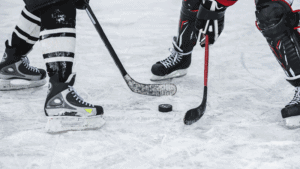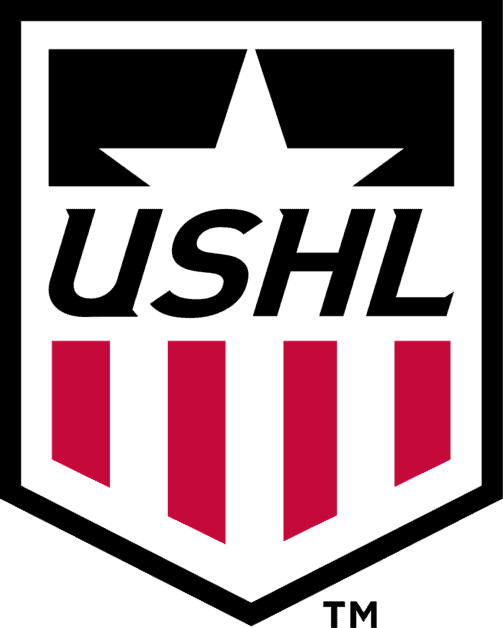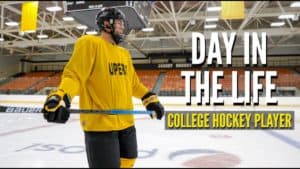1. What is junior hockey?
Junior hockey refers to a level of ice hockey that serves as a transition between amateur and professional play. It is predominantly played by young athletes aged 16 to 20, although age limits and specific regulations can vary depending on the league or country. Junior hockey provides players with an opportunity to further develop their skills, gain exposure to scouts and coaches, and potentially advance to higher levels of competition.
2. How old do you have to be to play junior hockey?
The age requirements to play junior hockey differ based on the league and geographical location. In North America, players typically begin playing junior hockey around the ages of 16 to 20. However, in other countries, such as Europe, the age range may vary. It’s essential to research and understand the specific age limits set by the leagues or organizations in your area of interest.
3. What are the different levels of junior hockey?
Junior hockey consists of various levels, each representing a different tier of competition. The levels can vary between countries, but here are the common tiers found in North America:
a) Tier 1: This is the top level of junior hockey and includes leagues like the United States Hockey League (USHL) and the Canadian Junior Hockey League (CJHL). These leagues attract elite players and provide a pathway to collegiate hockey or professional leagues.
b) Tier 2: The next tier below Junior A, which includes leagues like the North American Hockey League (NAHL) in the United States and provincial Junior A leagues in Canada.
c) Tier 3: This level often includes regional or local leagues, providing opportunities for younger players to develop their skills.
4. How can I try out for a junior hockey team?
Trying out for a junior hockey team requires a combination of talent, preparation, and dedication. Here are some steps to help you in the process:
a) Research: Identify the leagues and teams you’re interested in and learn about their tryout procedures, requirements, and schedules.
b) Preparation: Work on improving your skills, fitness, and overall hockey knowledge. Consider working with coaches or trainers to enhance your performance.
c) Showcase events: Attend showcases, camps, or tournaments where scouts and coaches are present. These events provide an opportunity to showcase your abilities and catch the attention of junior hockey personnel.
d) Contact teams: Reach out to teams directly and inquire about their tryout processes. Follow any instructions provided and ensure you meet the necessary registration deadlines.
e) Attend tryouts: Attend the scheduled tryouts and give your best effort. Be prepared to demonstrate your skills, work ethic, and teamwork during the evaluation process.
5. What are the benefits of playing junior hockey?
Playing junior hockey offers several benefits to aspiring athletes:
a) Skill development: Junior hockey provides an environment for players to enhance their hockey skills, tactical understanding, and physical conditioning.
b) Exposure to scouts: Junior hockey leagues attract scouts from college programs and professional teams, increasing the likelihood of being noticed for higher-level opportunities.
c) Scholarship opportunities: Exceptional players may receive offers for athletic scholarships, allowing them to pursue higher education while continuing to play hockey.
d) Pathway to professional hockey: Junior hockey serves as a stepping stone to higher levels of competition, such as college hockey or even the professional ranks.
e) Personal growth: Playing junior hockey fosters discipline, teamwork, time management, and resilience, which can benefit players both on and off the ice.
6. How competitive is junior hockey?
Junior hockey is highly competitive, especially at the top levels. Players are driven, skilled, and aspiring to advance their careers. The competition can vary based on the league and team, but generally, junior hockey demands a high level of commitment and effort from players.
7. How much does it cost to play junior hockey?
The cost of playing junior hockey can vary significantly depending on factors like the league, team, location, and individual circumstances. Expenses may include equipment, team fees, travel costs, accommodation, and personal training. It’s essential to research specific teams and leagues to understand the financial commitments involved.
8. What are some famous NHL players who started in junior hockey?
Numerous NHL players began their careers in junior hockey. Some notable examples include Sidney Crosby, who played in the Quebec Major Junior Hockey League (QMJHL), and Connor McDavid, who played in the Ontario Hockey League (OHL). Other NHL stars who developed in junior hockey include Steven Stamkos, Nathan MacKinnon, and Auston Matthews, to name just a few.
9. How long is the junior hockey season?
The length of the junior hockey season varies based on the league and level of competition. Generally, junior hockey seasons span from September to March or April. However, playoffs and national championships can extend the season for teams that qualify for postseason play.
10. Can you get a scholarship for playing junior hockey?
Yes, players have the potential to receive scholarships for playing junior hockey, particularly in North America. Junior hockey serves as a platform for players to showcase their skills to college recruiters and scouts. Exceptional players may be offered athletic scholarships, enabling them to continue playing hockey while pursuing a college education.












